As businesses around the globe deal with postponed meetings, temporary office closures, and remote working restructures, those in “essential industries” stand alone on the frontlines.
During the COVID-19 global health crisis, essential employees in these industries are putting themselves at higher risk of virus exposure by being around others on-site, or by coming into direct contact with customers.
Now more than ever, their leadership teams need to maintain business continuity by putting procedures in place to help keep their staff safe. This should involve (further) digitalization of the workplace, including the use of cloud-based software solutions to help keep worker health risks low.
To learn how some of these added COVID-19 pressures can be solved now and in the future, let’s focus on an important part of the essential communications and information technology sector: data centers.
Data centers face new challenges
Data centers, which house computer and networking equipment to collect, store, process, and distribute data, are undergoing a number of changes during the COVID-19 crisis.
As a growing number of individuals are working remotely due to social distancing requirements, telecommunication and data storage services are in even higher demand.
While this increased demand can benefit the sector, data centers are facing challenges like additional strain on usage capacities and adjustments to workers’ schedules. Some have even resorted to joining forces, competitor to competitor, in an effort to fight COVID-19 and keep all those working on site healthy and safe.
On site, data centers have adjusted employee shift schedules, decreasing the number of workers at a given time to lower the risk of spreading the virus. In many cases, individuals who are allowed at the centers are limited authorized, essential personnel.
As Danny Lane, SVP of global operations at Digital Realty, told Data Center Knowledge:
“We continue to allow access to authorized people to our sites, but we have encouraged all customers to keep such traffic to essential personnel only if possible. If necessary, at higher-traffic locations we monitor traffic in the lobbies and use traffic-control methods where needed.”
How data centers benefit from visitor management systems
To help monitor traffic and protect essential employees and visitors during health crises, data centers can highly benefit from implementing a cloud-based visitor management system (VMS). Here’s how:
1. Pre-screening of authorized employees and visitors.
Workers and visitors during and after COVID-19 should be properly vetted to reduce the spread of the virus.
Via an invitation email, visitors receive key health guidelines and information necessary to read before arriving. Front desk staff can then ensure that individuals have read and signed these agreements to get access to the premises. Staff can also send specific health and safety instructions, such as when and where temperatures will be taken on site.
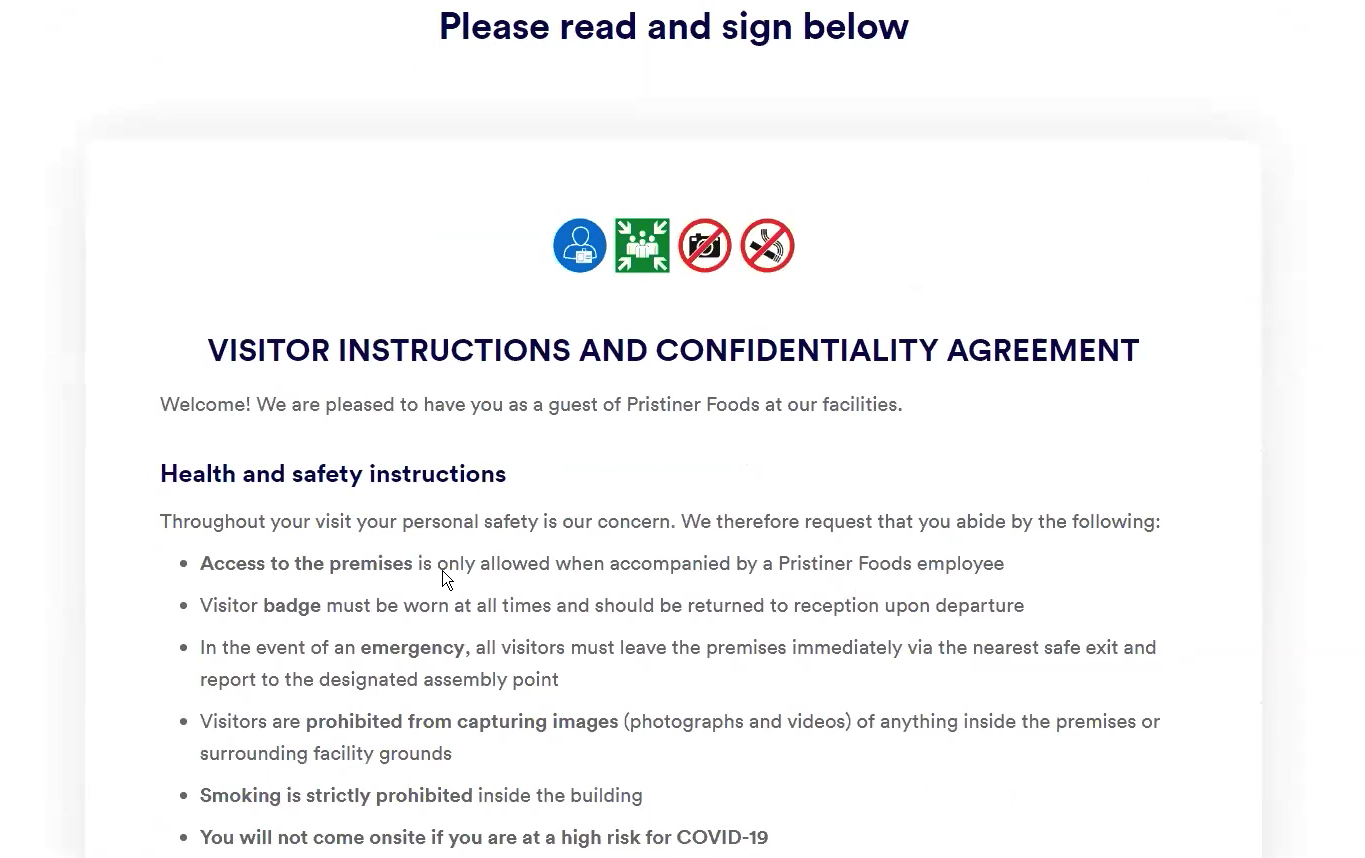 Within a VMS, any information related to COVID-19 can be recorded in visitor profiles. This can include answers to questions like, “Have you traveled outside of the country in the last 14 days?” or “Have you been in contact with anyone infected by the virus?”
Within a VMS, any information related to COVID-19 can be recorded in visitor profiles. This can include answers to questions like, “Have you traveled outside of the country in the last 14 days?” or “Have you been in contact with anyone infected by the virus?”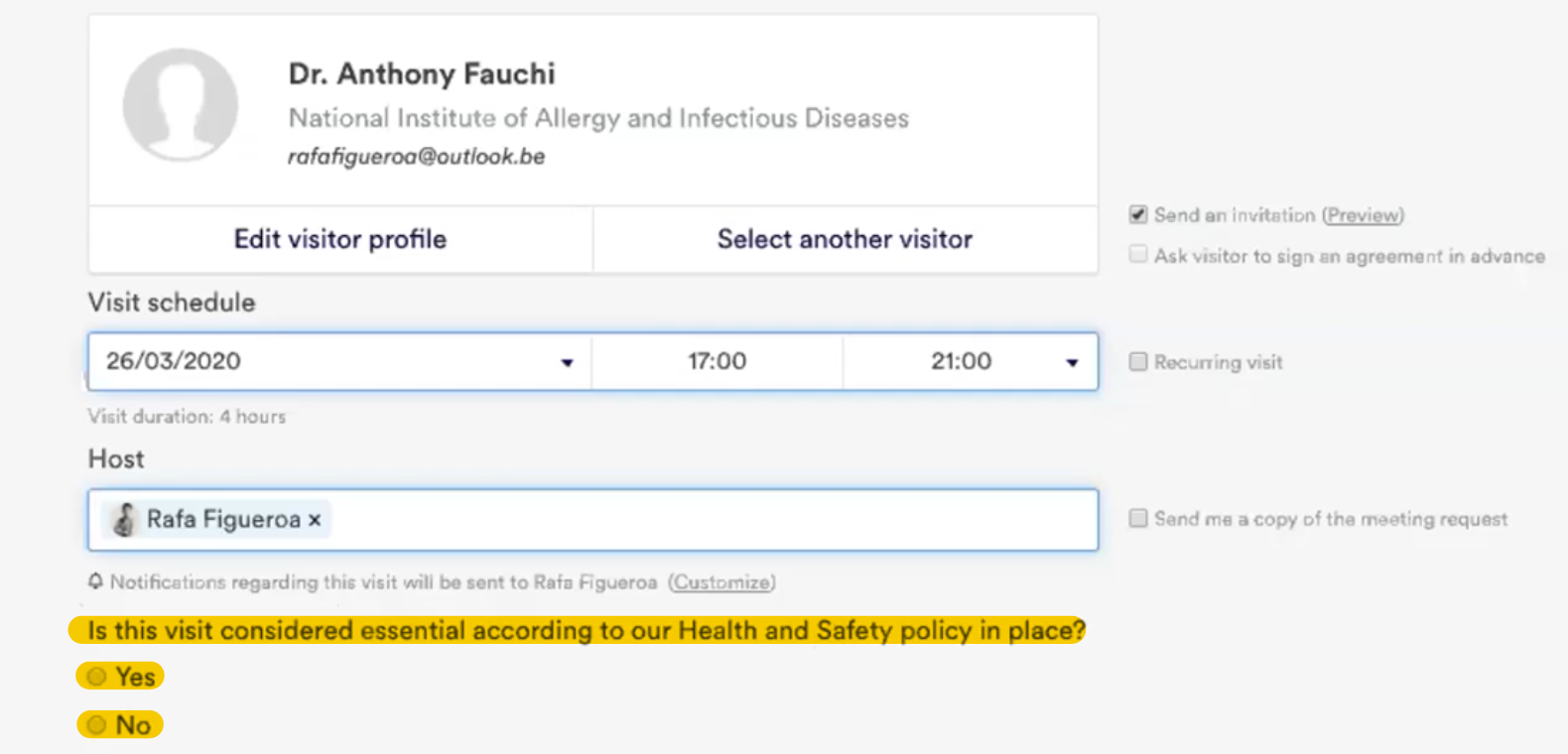
2. On-site screening of authorized individuals.
Necessary questions to vet employees and visitors for potential virus risk can be asked upon arrival, via an iPad kiosk or directly from Proxyclick's desktop version at the front desk. Questions might be related to recent travel history, or recent contact with infected individuals, as mentioned above.
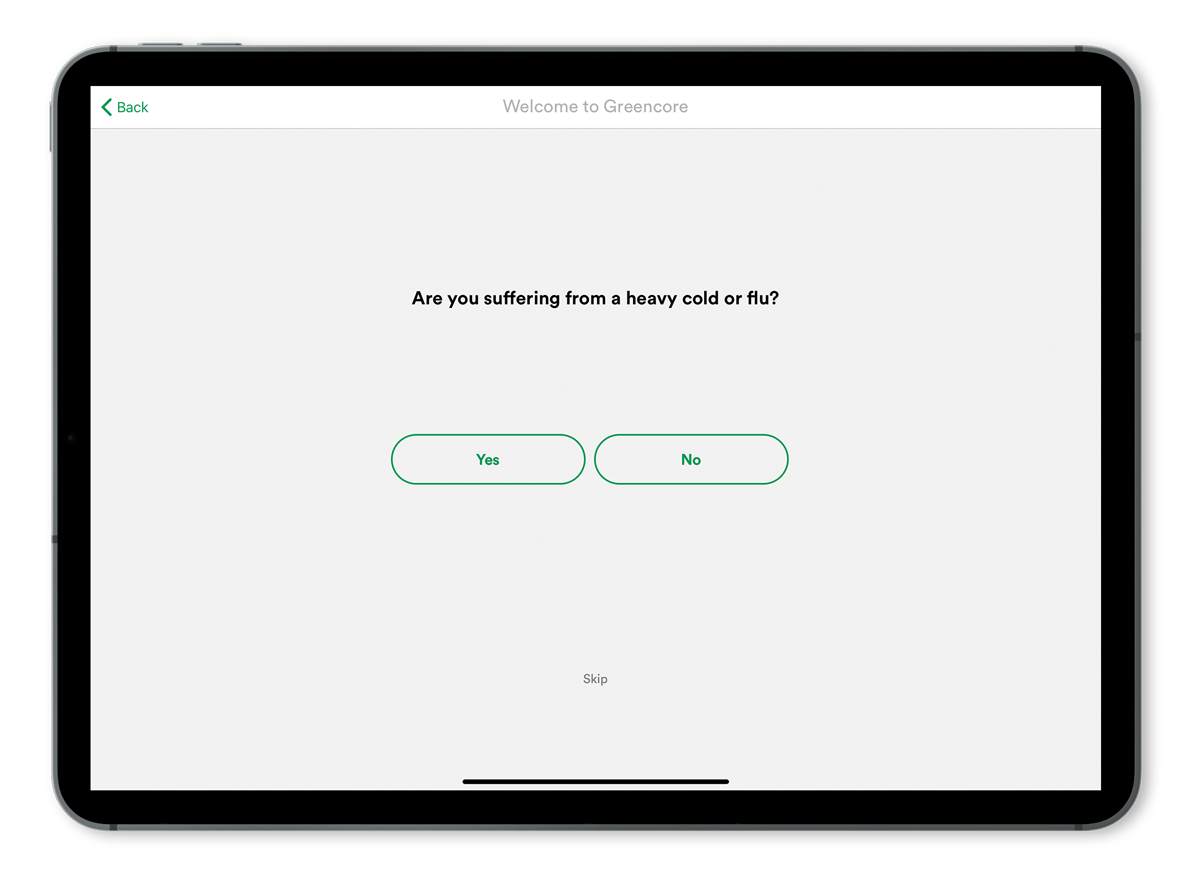 In your VMS, you can set this visitor or employee data to automatically delete after a specific number of days.
In your VMS, you can set this visitor or employee data to automatically delete after a specific number of days.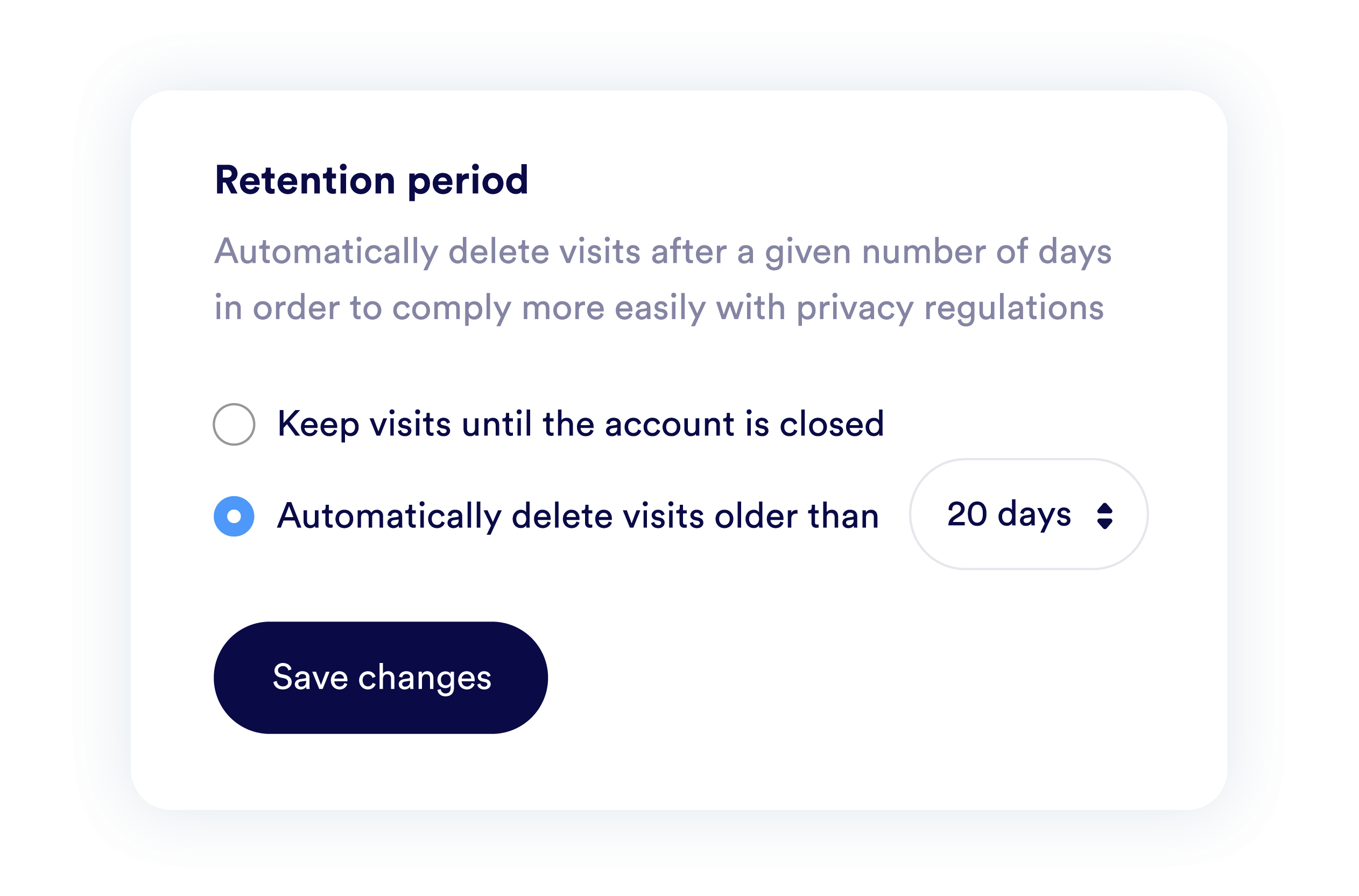
However, before asking health-related questions answers, be sure to review your region or country's health data privacy laws.
3. Introducing touchless check-ins.
The ability to send a QR code in advance, via an invitation email, helps create a touchless check-in experience for employees and visitors.
For example, when Proxyclick is integrated with access control systems, authorized individuals can simply scan their QR code at specific doorways or turnstiles. They’ll get direct access to certain areas of the premises, during a given time period.
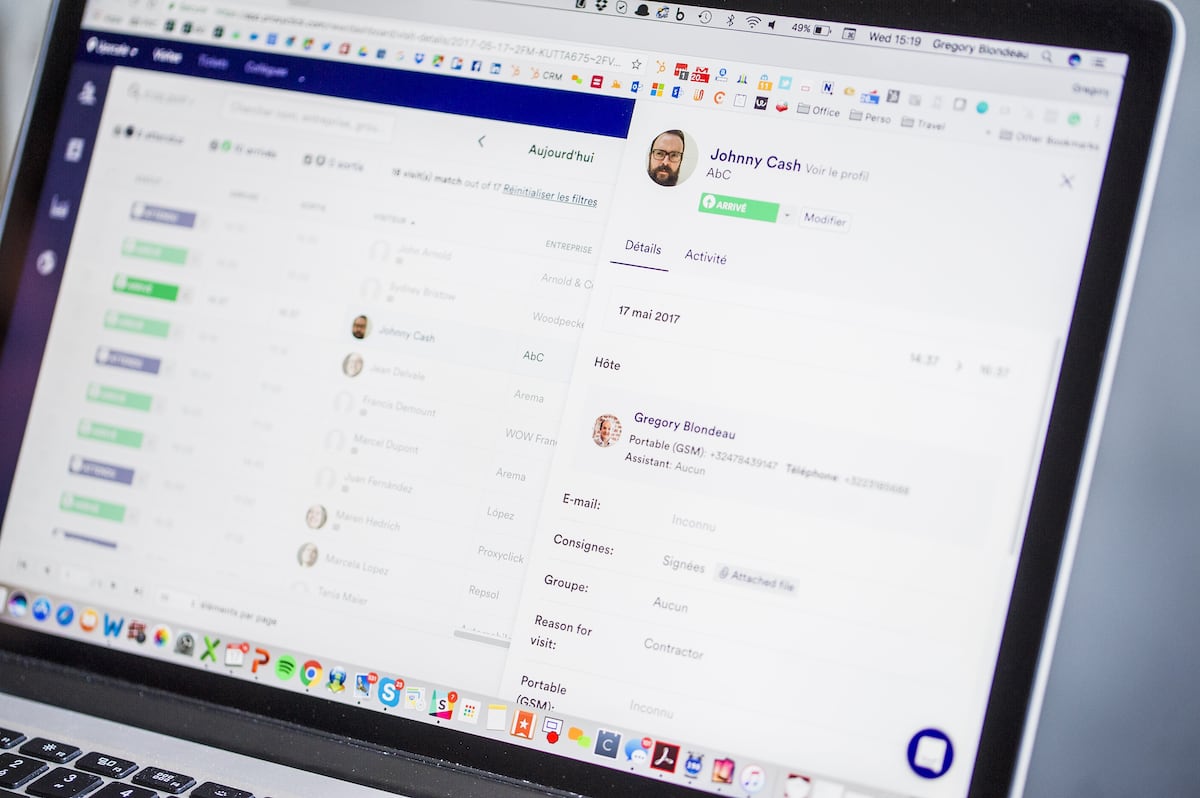 Temporarily removing front desk kiosks, encouraging front desk staff to login in to their VMS via desktop, is another way to create a touchless check-in experience.
Temporarily removing front desk kiosks, encouraging front desk staff to login in to their VMS via desktop, is another way to create a touchless check-in experience.
4. Customer service on standby.
Data centers can benefit from a strong customer success team during COVID-19, and in everyday situations. At Proxyclick, our team is working remotely during COVID-19 and is on standby. We’re fully available for consultations and can answer any urgent questions.
Before the crisis, one of our data center customers, CyrusOne, emphasized the importance of our customer success and technical support teams, which helped oversee the integration of ID scanning systems.
5. Easy reporting capabilities.
Data centers can easily access visitor reports during COVID-19 to see who is entering the premises and when. Managers can get full, real-time visibility into the situation, and data is reported in a clear and consistent manner.
Queries on individuals entering a location on a given day during a certain time can be extracted with reporting capabilities. If a company learns that a person who was on site days prior was potentially infected with the virus, this person can be immediately and discreetly informed via email using this VMS data.
Data center staff can also provide their customers with access to visitor information, so they can see activity of their own employees or contractors during, before, or after a visit.
6. Flexibility to fit in with other security elements.
The right VMS, complete with an open API, will be able to fit in well with other security elements at data center facilities. ID scanning and video systems can be supported or integrated for additional verification at the front desk. Access control systems like turnstiles and specific doorways can also be integrated, giving authorized individuals access via a QR code.
Overall, a VMS that allows for such an integrated approach helps data centers meet robust security compliance requirements, now and in the future.
The new, destined workplace norm
After all of this, one takeaway is clear: having a visitor management system is destined to become the new norm in the workplace.
For data centers, others in essential industries, and those just looking to better control traffic upon returning to the office, the question is no longer whether a cloud-based VMS is needed. Rather, it’s how soon it can be implemented, and how flexibly it can adapt to business’ specific post-COVID-19 needs.
For more information on tackling COVID-19 in the workplace now and in its aftermath, visit our COVID-19 Resource Center or contact us directly here.